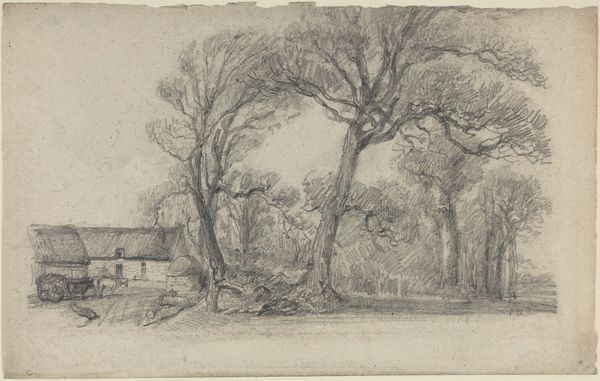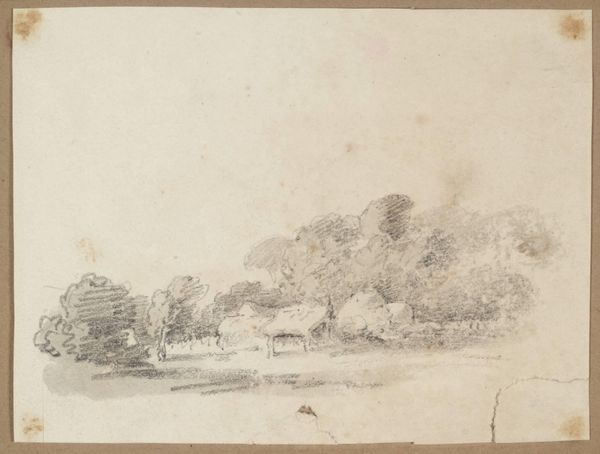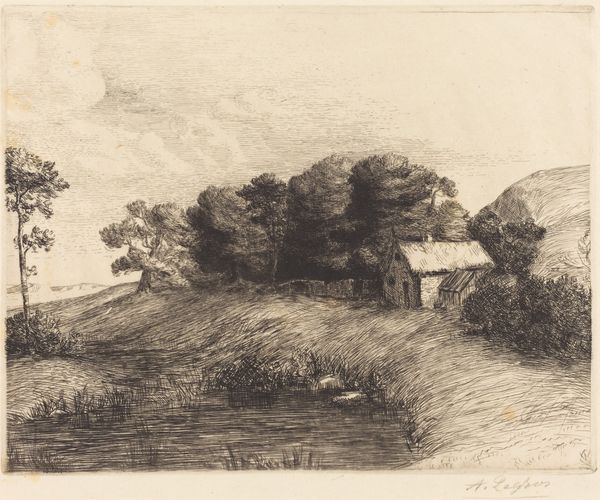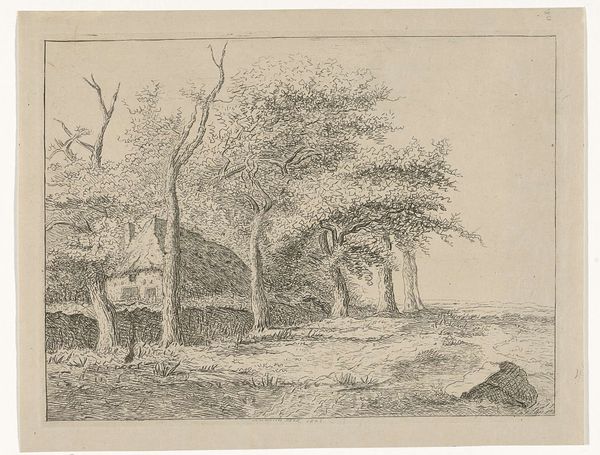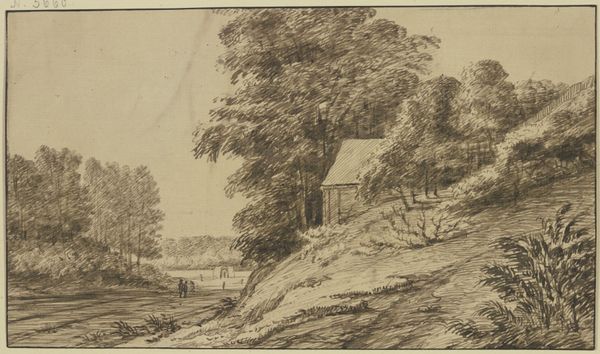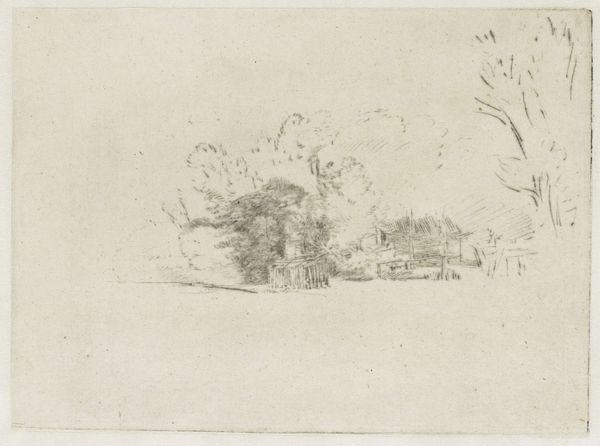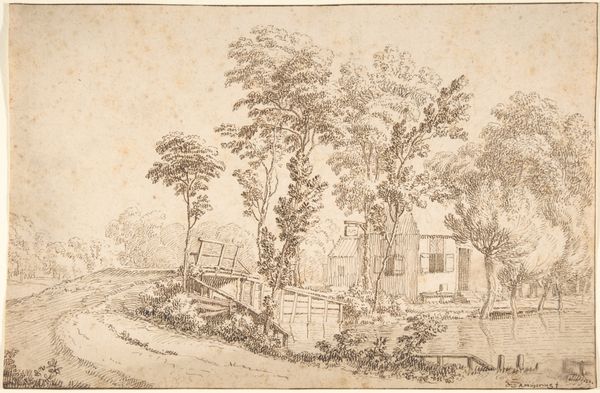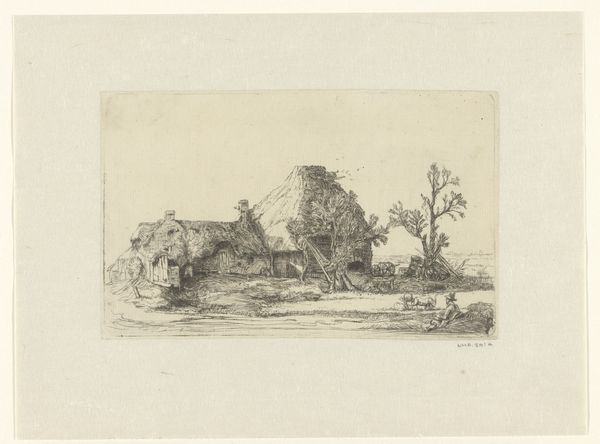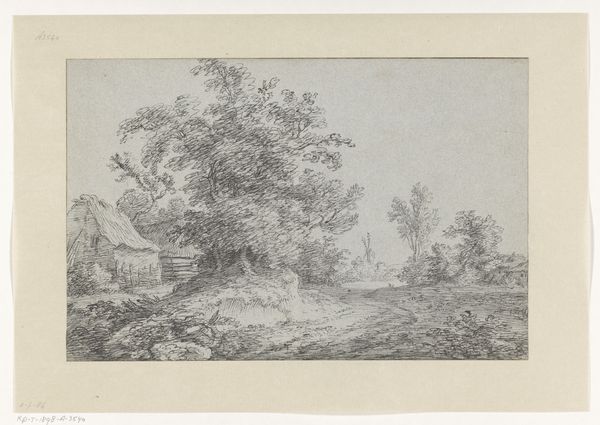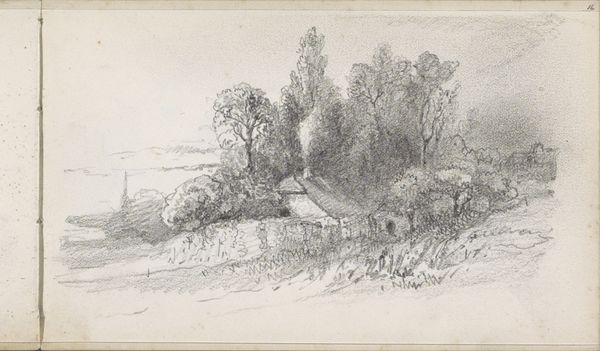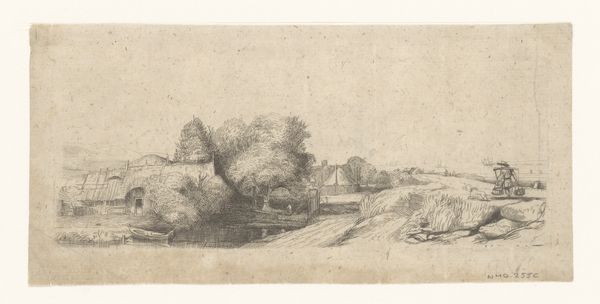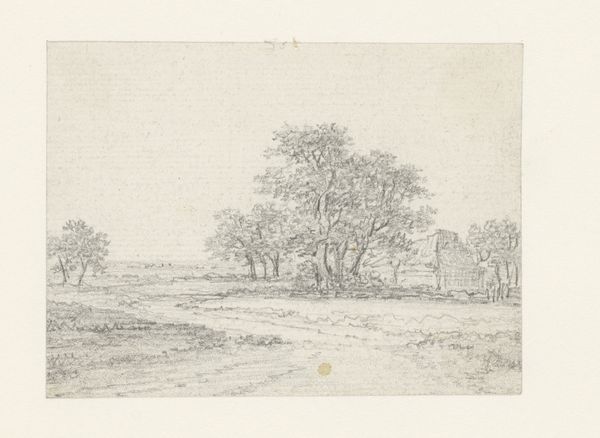
drawing, plein-air, pencil
#
drawing
#
dutch-golden-age
#
impressionism
#
plein-air
#
landscape
#
pencil
#
realism
Dimensions: height 169 mm, width 255 mm
Copyright: Rijks Museum: Open Domain
Editor: Here we have Willem Roelofs' "Boerderij bij Westerbork te Drenthe", created sometime between 1832 and 1897. It’s a pencil drawing, and what strikes me is how the dense foliage and buildings seem almost interwoven. What are your thoughts? Curator: I see a deliberate act of making visible the typically unseen labour and environment intertwined in rural life. Look closely at the density of the pencil strokes; they mimic the labour-intensive aspects of farm work itself. The use of pencil, a readily available and accessible material, suggests a democratisation of art-making. How does that accessibility influence your interpretation? Editor: I suppose it makes it feel less like a formal portrait and more like a quick sketch, capturing a specific moment and place without grand artistic pretension. Almost like early documentation. Curator: Exactly! The choice of "plein-air" as a method means Roelofs directly engages with the physical world, recording its material essence and the conditions of labor that shape it. Note the barest indications of animal life in the field... these farms provided both sustenance and commodities for growing urban markets. It’s a record of the complex relationships of production and consumption in Dutch society. Editor: So, it's less about romanticising the countryside, and more about highlighting the realities of rural existence through its materials and production? Curator: Precisely. The material rendering becomes a powerful means of representing socio-economic dynamics. By focusing on the humble materials and process of creating art, we illuminate the connection between the artwork and its surrounding world. It encourages us to reflect on how materials and labour intertwine to define both the creation and the representation of "reality." Editor: That perspective really changes how I see it! It's not just a landscape; it’s a commentary on the material conditions of the time. Curator: Indeed. By observing the work and production happening at this site in Drenthe we get to view it through the lens of the human relationship with land and labor. A fresh perspective indeed.
Comments
No comments
Be the first to comment and join the conversation on the ultimate creative platform.
